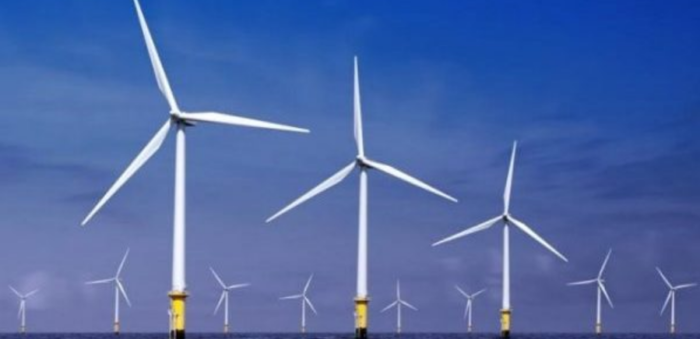Manufacturers look for bigger and better wind farms, aiming to squeeze more energy out of the wind; Therefore, manufacturers as MHI Vestas are building bigger machines with longer blades and more powerful nacelles. Yet, the next generation of turbines will need even bigger boats, Bloomberg reports.
Installing turbines is a feat of engineering.
First, foundations weighing hundreds of tonnes are rammed or anchored into to the seabed at depths of 50 meters or more. Then, a massive crane hoists steel towers each the size of a small skyscraper on to the footings. Finally, the generator housing, or nacelle, is perched on top and the blades are put in place. Those nacelles already are about the size of a truck.
Yet, as the turbines are getting bigger, boats should be bigger, as well. The few ships designed to be able to manage big wind turbines are almost exclusively in Europe, and some are booked up until next year. Owners can charge anything from $112,000 to $180,000 a day for their services. That compares with the below $25,000 rate for one very large crude carrier class supertanker.
As Bloomberg highlights, these vessels are scarce, numbering about a dozen in the world. And at a cost of more than $300 million, they each need to be capable of hoisting generators the size of shipping containers atop steel towers hundreds of feet tall.
[smlsubform prepend=”GET THE SAFETY4SEA IN YOUR INBOX!” showname=false emailtxt=”” emailholder=”Enter your email address” showsubmit=true submittxt=”Submit” jsthanks=false thankyou=”Thank you for subscribing to our mailing list”]
Although major wind turbine manufacturers are keen on the idea of expanding the size of their machines, a large number of small shipowners are hesitant on building more ships before knowing how big the vessels need to be. That probably reflects a ship shortage in the future, threatening the outlook for a seven-fold jump in offshore wind capacity by 2030.
Yet, Europe’s biggest utilities invest more than $10 billion in 2019 on getting electricity from sea breezes. In the meantime, BloombergNEF expects offshore wind capacity to jump to 154 gigawatts by the end of the next decade from about 22 gigawatts now as the thirst for cleaner electricity grows. Although the majority of the offshore wind farms are located in Europe, China, the US and South Korea will be big markets in the future.
One of the next generation of wind turbines is Jan De Nul’s Voltaire, named after the French writer, that will begin operations in 2022. With a length of 169 meters (554 feet), it has deck space bigger than the soccer pitch at London’s Wembley Stadium.
The vessel has been constructed in China and will be able to carry 3,000 tonnes of equipment to a height of 165 meters. That’s twice the load of Jan de Nul’s Vole Au Vent ship built six years ago and more than enough to hoist the largest turbines currently available.
Concluding, as Wood Mackenzie Ltd noted, 18 nations will have offshore turbines by 2027, compared with seven in 2017.






























































